Knutsford Ornithological Society Holiday in Norfolk - 21st to 24th May 2023
17 Members headed over to north Norfolk for our first few days together since the 45th anniversary trip to mid-Wales in May 2019. We were based at the Kings Lynn Premier Inn for our three nights stay; not everyone's cup of tea of course, but it does make organising appropriate accommodation so much easier for the trip leader. Sheila Blamire had shouldered responsibility this time and had produced a packed itinerary that would take in a mixture of habitats that, we hoped, would produce a list of over 100 species for the four days birding. Something to aim for.
Day #1 (21st May). Weeting Heath and Lakenheath.
KOS treasurer, Frank Dearden picked Len Mason and me up from Bucklow Avenue at 8:00am, in the trusty SAAB, before heading south down the M6 and A14 to the first stop of the day at the NWT's Weeting Heath reserve. We paused for a comfort stop at Rugby services, arriving at our destination spot on at 12 noon.
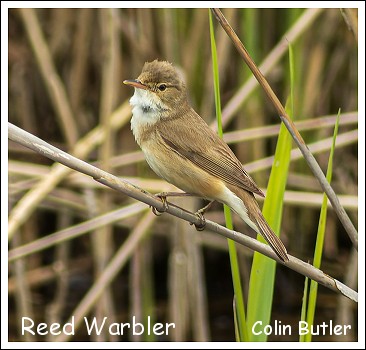 The reserve is famous for its nesting Stone Curlews and a patch of land about the size of a football pitch is rotavated to provide a suitable nesting habitat for the birds. There were two pairs and we saw two young offsprings. Woodlarks were also on our list of possible species at this location but, apparently, they were well into the nesting cycle and had stopped singing although the Merlin app. picked up their calls - not much use if you're not familiar with them though! Anyway it was a reasonable start proceedings and we left with 21 species on the trip tick list.
The reserve is famous for its nesting Stone Curlews and a patch of land about the size of a football pitch is rotavated to provide a suitable nesting habitat for the birds. There were two pairs and we saw two young offsprings. Woodlarks were also on our list of possible species at this location but, apparently, they were well into the nesting cycle and had stopped singing although the Merlin app. picked up their calls - not much use if you're not familiar with them though! Anyway it was a reasonable start proceedings and we left with 21 species on the trip tick list.
Our second port-of-call was the RSPB's Lakenheath Fen Nature Reserve, close to the village of Brandon. This is a large reserve with numerous small pools and areas of phragmites reed. We'd been here before, in 2018, and some remembered the long drag over to the Joist Fen viewpoint, part of a 3 mile circular route, so decided to sit quietly at one of the other viewpoints and let the birds come to them. There was plenty to see and hear - Willow Warblers, Cetti's Warblers, Whitethroats and both Reed and Sedge Warblers were all in song on a pleasantly warm late Spring afternoon. Marsh harriers floated over the reeds, above them Hobbies - I saw three together but others had up to 20 in view at the same time! Great to hear (and see) Cuckoos for the first time this year, I've not had one locally yet and I'm not optimistic about one ever turning up. We finally headed for Kings Lynn at about 5:00pm, booked in and hurriedly unpacked before heading down for dinner. We finally headed for Kings Lynn at about 5:00pm, booked in and hurriedly unpacked before heading down for dinner.
Facilities at the Premier Inn were much as expected, spotlessly clean rooms with everything in its place and a place for everything. The staff were friendly and efficient, the food, whilst nothing to write home about, was perfectly adequate. We dined as a group on two previously booked tables and, on the second evening, we were able to celebrate Len's birthday in an appropriate manner. Quite a change from this time last year when t'owd lad was still incapacitated after snapping his Achilles tendon.
Following the festivities a small group of stalwarts set off to Dersington Bog in search of Nightjars and Woodcock. They were successful and saw and heard both species, albeit at a distance, bringing our list to 60 at the end of the first day. Frank and I went down the following evening and had more luck, with the Woodcocks "roding" directly overhead and a very active Nightjar "churring" and hunting just behind where we stood. Making our way back to the car we were delighted to hear family parties of Tawny Owls squabbling amongst themselves somewhere out in the dark conifer plantations
Day #2 (22nd May). Titchwell and Holme Dunes.
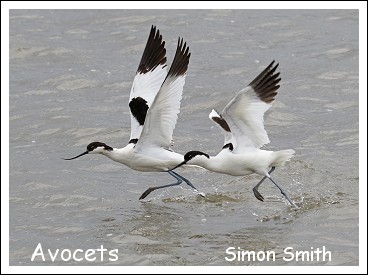 Leaving the Premier Inn at 9:00am we drove north to the RSPB's excellent Titchwell Marsh Nature Reserve., arriving just before 10am. Leaving the Premier Inn at 9:00am we drove north to the RSPB's excellent Titchwell Marsh Nature Reserve., arriving just before 10am.
Quoting from the RSPB's website ........"Located on the north coast of Norfolk, between the villages of Titchwell and Thornham, Titchwell Marsh is blessed with diverse habitats that include reedbeds, salt marsh and freshwater lagoons where avocets, bearded tits and marsh harriers nest. There's also a wide sandy beach here, which offers extensive views across The Wash.".........
An accurate description and it wasn't long after leaving the reception centre that we began to rapidly add new species to the trip list. From the West bank path we were looking down into the phragmites and had beautiful views of Reed and Sedge Warblers, the latter climbing to the top of the reeds before bursting into song [Geoff Blamire shot some video footage of the birds with his impressive new piece of kit -click here to watch it Thanks Geoff, the song was reproduced perfectly !] ; this was the recommended spot for the Bearded Reedlings that were nesting there but on this occasion they didn't put in an appearance.
Moving along the path we reached the Island hide where a whole host of new species were on display. Avocets had young 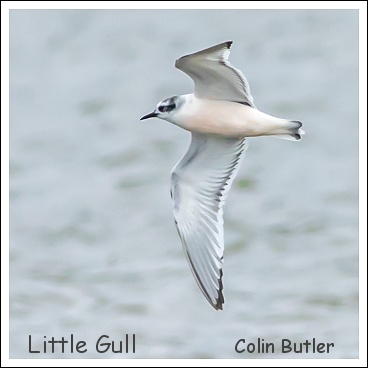 and were dealing aggressively with any intruders, on the islands we noted nesting Common Terns and Mediterranean Gulls whilst a little further away a flock of around 40 non-breeding Brent Geese was quite a surprise [Geoff's video footage of the Geese]. Apart from the obvious Avocets other waders included Common Sandpiper, Redshank, Little Ringed Plover, Ringed Plover and Oystercatcher. Reaching the sand dunes we caught up with Bob Groom who was able to add an elusive Spoonbill to the list and just a little further on we reached the sea where we found Sanderling and Turnstone feeding along the shoreline. and were dealing aggressively with any intruders, on the islands we noted nesting Common Terns and Mediterranean Gulls whilst a little further away a flock of around 40 non-breeding Brent Geese was quite a surprise [Geoff's video footage of the Geese]. Apart from the obvious Avocets other waders included Common Sandpiper, Redshank, Little Ringed Plover, Ringed Plover and Oystercatcher. Reaching the sand dunes we caught up with Bob Groom who was able to add an elusive Spoonbill to the list and just a little further on we reached the sea where we found Sanderling and Turnstone feeding along the shoreline.
Re-tracing our steps we turned to the Parrinder hides where two summer plumage Grey Plovers showed well through the 'scopes that had been hurriedly set up.
Lunch was taken in the cafe that's attached to the information centre but before setting of for our next destination news came through of two Little Gulls showing well from back at the Island hide. Much too tempting for our photographers and off they went, returning with some excellent shots of the birds!
The Norfolk Wildlife Trust's Holme Dunes was next on the list, another Norfolk Wildlife Trust reserve with an impressive visitor centre and cafe. The chap on duty gave us a comprehensive introduction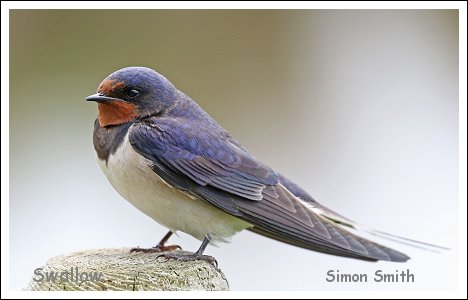 to the location, wishing us good luck as we set off to the first of three hides a short distance away. It's a big reserve and the sort of place where you could easily spend a whole day birding, the Norfolk Coast Path runs along the northern edge and I was impressed that this is available on Google Street View. to the location, wishing us good luck as we set off to the first of three hides a short distance away. It's a big reserve and the sort of place where you could easily spend a whole day birding, the Norfolk Coast Path runs along the northern edge and I was impressed that this is available on Google Street View.
A pair of Swallows had a nest in the first hide and gave a good photo-op for Simon as it waited patiently for us to move on. Outside we had Mute Swans, Little Grebe, Avocets, Pochard, Shelduck, nesting Shoveler and a small flock of Black-tailed Godwits. Lesser Black-backed Gull and Grey Partridge were additions to the list.
On the itinerary Sheila had given us the option of rounding off the day with a visit to Hunstanton Cliffs. where those that took up her suggestion were rewarded with views of the nesting Fulmars.
Day #3 (23rd May). Cley and Roydon Common.
The final full day of our trip to Norfolk took us first to the NWT's Cley reserve, their oldest and most well known. From the website ........."It was purchased in 1926 to be held 'in perpetuity as a bird breeding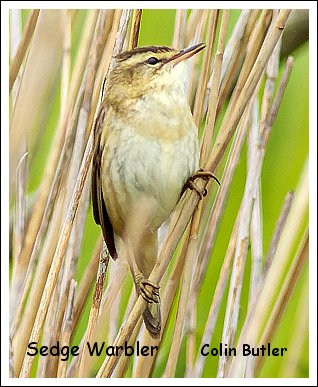 sanctuary'. It provided a blue print for nature conservation which has now been replicated across the UK. In 2012 an appeal helped purchase a further 57 hectares linking the two NWT reserves at Cley and Salthouse together, creating a single coastal reserve of more than 300 hectares. Today, Cley and Salthouse Marshes is one of the country's most popular birdwatching sites, attracting more than 110,000 human visitors each year. The six hides (four of which are accessible via boardwalks) give fantastic views across pools and scrapes that are specially managed to attract breeding and passage birds. The award-winning visitor centre features interactive interpretation, regularly changing exhibitions, and a well-stocked gift and book shop.".......... sanctuary'. It provided a blue print for nature conservation which has now been replicated across the UK. In 2012 an appeal helped purchase a further 57 hectares linking the two NWT reserves at Cley and Salthouse together, creating a single coastal reserve of more than 300 hectares. Today, Cley and Salthouse Marshes is one of the country's most popular birdwatching sites, attracting more than 110,000 human visitors each year. The six hides (four of which are accessible via boardwalks) give fantastic views across pools and scrapes that are specially managed to attract breeding and passage birds. The award-winning visitor centre features interactive interpretation, regularly changing exhibitions, and a well-stocked gift and book shop."..........
The car park was almost full when we arrived and there was a queue at the reception kiosk as the two volunteers taking our
£4
entry fee struggled with their new computer system. (why did they need our full names and addresses?) But it was worth the wait as we each received our visitor stickers and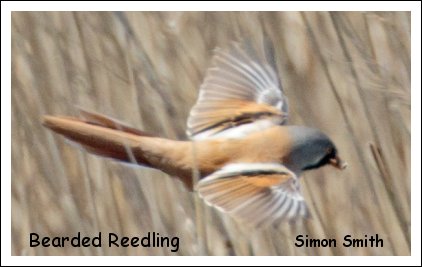 headed off down to the group of three hides overlooking two scrapes and Pat's Pool. The (by now) usual Cetti's, Reed and Sedge Warblers were in good form from the side of the path whilst, from the hides, new species included Ruff, Teal, Sand Martin and a nice Temminck's Stint in Summer plumage, who's ID was confirmed by Colin, who'd found an example last week close to home in Hale. headed off down to the group of three hides overlooking two scrapes and Pat's Pool. The (by now) usual Cetti's, Reed and Sedge Warblers were in good form from the side of the path whilst, from the hides, new species included Ruff, Teal, Sand Martin and a nice Temminck's Stint in Summer plumage, who's ID was confirmed by Colin, who'd found an example last week close to home in Hale.
We then moved on to Cley's famous East Bank and at last found some Bearded Reedlings in the phragmites. They didn't stay in view for long and proved to be a bit of a challenge for our photographers but Simon persevered and managed a record shot as a bird flew between perches. Later on in the day Derek and Jean had a Bittern at the same spot. I believe this was the only one of the trip.
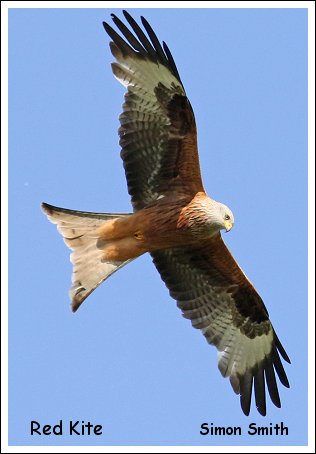 After lunch in the Cley cafe we headed south-west to the NWT's Roydon Common reserve. No new species for us here but it was a splendid spot for a gentle afternoon stroll. Great to hear Yellowhammers singing as they seem to have vanished this year from our local patch in Mobberley, Curlews calling too although, again, it's many years since they nested in Tatton Park and Mobberley. A family of recently fledged Stonechats perched on barbed wire waiting to be fed by their parents. Overhead a distant Harrier appeared to be Hen but it was just the light and examination of Simon's image revealed it to be Marsh. As you can see from the image on the left a Red Kite gave no such problems! After lunch in the Cley cafe we headed south-west to the NWT's Roydon Common reserve. No new species for us here but it was a splendid spot for a gentle afternoon stroll. Great to hear Yellowhammers singing as they seem to have vanished this year from our local patch in Mobberley, Curlews calling too although, again, it's many years since they nested in Tatton Park and Mobberley. A family of recently fledged Stonechats perched on barbed wire waiting to be fed by their parents. Overhead a distant Harrier appeared to be Hen but it was just the light and examination of Simon's image revealed it to be Marsh. As you can see from the image on the left a Red Kite gave no such problems!
Day #4 (24th May). RSPB Frampton Marsh
It's been some years since we visited Frampton and, as with other RSPB reserves, it's been improved by the addition of a cafe. The first new bird on the list came as a surprise - Whooper Swan; one of the wardens thought that it could have been one of the cygnets from Welney where Whoopers that have not been able to fly back to Iceland due to wing injuries caused by colliding with power lines have successfully bred. He hadn't yet been able to see if it was ringed.
We spent a couple of hours on the reserve, some of the party reached as far as the east hide and I think we all enjoyed the views from the
360⁰
hide. Returning to the visitor centre, we'd added three more species to the list (Raven, Wigeon and Kingfisher) bringing the final total to a creditable 114.
You'll perhaps notice that the full list at the bottom of this report includes Black-winged Stilt. We did in fact see a breeding pair at one place but were advised not to publish the exact location, despite the fact that everyone we talked to knew about them and sightings of the birds are still up on the appropriate website! (but, in fairness, not the fact that they were breeding)
So that was that and after some food in the excellent new cafe we headed for home. Our driver is not one for technology - sat navs and that sort of thing - so he handed me a route to follow; hand written on vellum parchment with his quill pen. Old school stuff but it worked as we wended our way across the midlands. Melton Mowbray will long be remembered because it seemed that the locals had been persuaded by the warm weather to dig out their Summer shorts for the first time this year. It was suggested that perhaps most of them worked in the local Melton Mowbray pie industry, for which the town is justly famous, and had spent the cold Winter months sampling the fruits of their labour. I'll leave you with that image but not before thanking Sheila for planning and leading the trip and liaising with the hotel staff and the staff of the various reserves we visited. Thanks also to Colin and Simon for their excellent images and, of course, all members of the party who came along and made our trip such a success!
Species recorded on the KOS trip to Norfolk. 21st to 24th May 2023.
Mute Swan, Whooper Swan, Greylag Goose, Canada Goose, Brent Goose, Egyptian Goose, Shelduck, Wigeon, Gadwall, Teal, Mallard, Shoveler, Pochard, Tufted Duck, Red-legged partridge, Grey Partridge, Pheasant, Fulmar, Cormorant, Bittern, Little Egret, Great White Egret, Grey Heron, Spoonbill, Little Grebe, Great Crested Grebe, Red Kite, Marsh Harrier,Sparrowhawk, Buzzard, Kestrel, Hobby, Water Rail, Moorhen, Coot, Oystercatcher, Black-winged Stilt, Avocet, Stone Curlew, Dunlin, Little Ringed Plover, Ringed Plover, Grey Plover, Lapwing, Sanderling, Temminck's Stint, Ruff, Woodcock, Black-tailed Godwit, Eurasian Curlew, Redshank, Green Sandpiper, Common Sandpiper, Turnstone, Black-headed Gull, Little Gull, Mediterranean Gull, Great Black-backed Gull, Lesser Black-backed Gull, Herring Gull, Little Tern, Sandwich tern, Common Tern, Stock Dove, Woodpigeon, Collared Dove, Cuckoo, Tawny Owl, Nightjar, Swift, Kingfisher, Great Spotted Woodpecker, Jay, Magpie, Jackdaw, Rook, Carrion Crow, Raven, Blue Tit, Great Tit, Coal Tit, Long-tailed Tit, Goldcrest, Bearded Reedling, Skylark, Sand Martin, Swallow, House Martin, Cetti's Warbler, Chiffchaff, Willow Warbler, Blackcap, Whitethroat, Sedge Warbler, Reed Warbler, Nuthatch, Wren, Starling, Blackbird, Song Thrush, Mistle Thrush, Robin, Stonechat, Dunnock, House Sparrow, Pied Wagtail, Meadow Pipit, Chaffinch, Greenfinch, Goldfinch, Linnet, Yellowhammer, Reed Bunting,
[ ✓ 114]
|
|
|